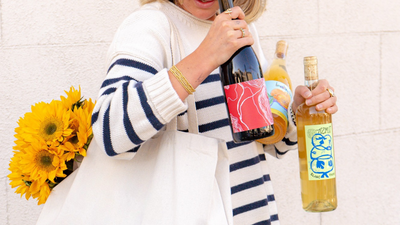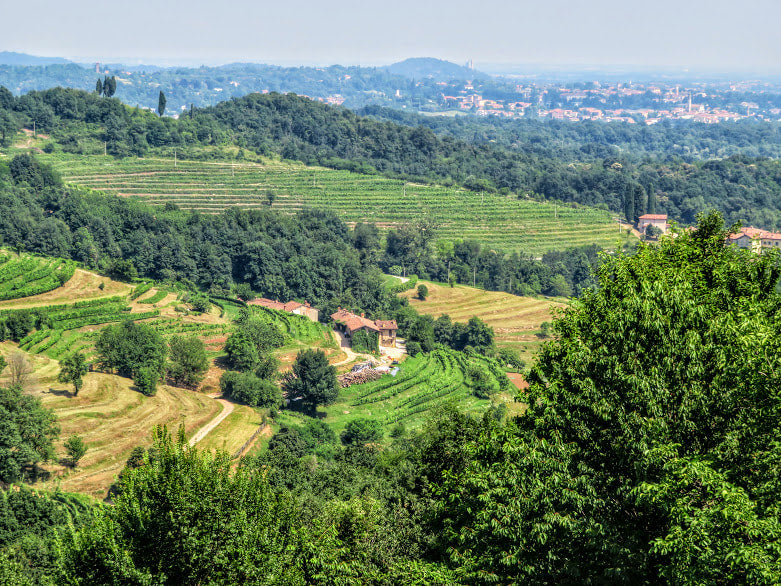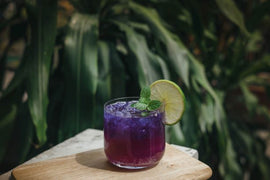LOMBARDIA
In the last few months, many of us have gotten more familiar with this region for reasons other than wine. Unfortunately, the region of Lombardia, or Lombardy in English, was the epicenter of the spreading of Coronavirus in Italy, and it's residents suffered the highest number of cases and fatalities in the country. With 12 provinces, it holds 1/6th of the Italian population and has the highest population density. It also has the largest population of people over 65 and 20% of the country's nursing homes. The provinces of Bergamo and Brescia are the most affected areas of the entire country, and there have been over 87000 confirmed cases and 16000 deaths in this region alone as of 6/3/2020. Lombardia is, along with Piedmont and Veneto, the economic engine of the Italian economy. Milano, the regional capital, is been always synonymous with Italian fashion in the world, but also rich with the various form of art, classic and modern. The lifestyle of the nation starts here. Like any other business, agriculture, and specifically the wine industry, has been hit pretty hard during the pandemic. Most of the wine produced in Italy is exported; North America and Asia are the major markets. Now that everything is stalled, it is becoming very hard for most of the producers keep up with the expenses, forcing them to lay off their employees and keep their wines in the cellar waiting during this uncertain time. This month we want to give our support to this region and showcase two producers from very different geographical areas, each of them with specific characteristics that make their wines unique. So please enjoy those wines while staying safe, healthy and in kind spirit. Elio Longobardi, Italian Wine Specialist PlumpJack Wine & Spirits – Noe Valley.
Cascina Belmonte, Serés e, Manzoni Bianco, Benaco Bresciano IGP 2017
About the Winery: Cascina Belmonte was born as family project in 2000, when Vittorio Di Martino and his wife Laura grew tired of living in a metropolitan Milano. They fell in love with this small estate in the hilly area of Valtènesi, in the province of Brescia, close to the Garda Lake shores, and decided to raise their family and work the land. The estate is about 20 hectares, of which 12 dedicated to the vines, and everything else to create an environment of biodiversity in symbiosis with the territory. Today their two sons, Enrico and Mario, are keeping this dream alive. Enrico has degree in agriculture technologies and in ecological agriculture sciences; he runs the vineyards and the cellar. Mario is in charge of the commercial aspect of their business. Vittorio and Laura are still fully involved with the activities of the winery providing their experience and support. Cascina Belmonte is committed to fully organic and sustainability farming. To minimize environmental impact, they use 100% compostable and recycled materials for packaging. Green technologies are applied to many aspects of their labor. About the Winemaking: After the grapes are harvested manually, they are brought to the cellar where they are washed to eliminate heavy metal dust, unwanted insects, and leaves. This process provides clean and healthy fruit, which then is cold pressed without oxygenation, followed by pre-fermentation time on the lees and postfermentation time with the yeast. The juice is then fined in stainless steel tanks before bottling. Serése, meaning cherry tree in local dialect, is made by 100% Incrocio Manzoni Bianco, a grape that was a result by crossing Riesling with Pinot Bianco. Tasting Notes: Light gold with green accents in color. Mint, dill, sage, grapefruit and cherry blossom, with a distinct flinty minerality on the nose. Those characteristics are also evident during the tasting, making this wine a perfect summer day aperitif as well a good companion for light food fare.
Rainoldi, Prugnolo, Valtellina Superiore DOCG 2015
About the Winery: The Casa Vinicola Aldo Rainoldi is the story of a family that started with limited means and was guided by a strong will, and is now in their third generation keeping up the same guidelines that inspired grandfather Aldo. Valtellina Valley runs for 25 miles east to west and is tucked in the northern part of Lombardia where the Rhaetian Alps border with Switzerland, in the province of Sondrio. In the 1920s, this territory was pretty poor, and most of its working population was forced to emigrate to Switzerland, Belgium, France, or America. The narrow valley didn’t offer too much soil for agriculture and working on the steep sides of the mountains wasn’t easy. Aldo Rainoldi decided to stay and become a wine merchant that sold around the region and across the border in Switzerland. In 1950, Aldo’s son Giuseppe joined him. They started to buy grapes instead of bulk wine and made their own wine, first sold in barrels and later bottled, expanding their market all over Europe and from the ’70 also in Japan and United States. Aldo represents the third generation; let’s call him junior, the nephew of grandfather Aldo. He study oenology and viticulture and at the end of the Nineties he started to work in the family winery. Today he’s the winemaker. The main grape cultivated in Valtellina is Nebbiolo, called Chiavennasca in this area; but the difference between this Nebbiolo and Nebbiolo from Piedmont is noteworthy. The high elevation of the vineyards confer a light elegance, freshness and softer tannins than its Piedmontese counterpart. About the Winemaking: Prugnolo is the Italian name of the Prunus Spinosa, or wild plum. This bush grows close to the vineyards and its berries ripen near harvest time. This bottle is made with 100% Nebbiolo and aged in 3 to 6-year-old barriques for 15 months, then bottle-aged for 6-9 months before release. Rainoldi strives to produce top quality wine that respects both family tradition and the environment. Each parcel is harvested based on its altitude in order to maintain perfect ripeness, and is vinified separately in a newly installed, high-tech winemaking cellar. Due to the extreme steepness of each parcel in Valtellina, grapes are handharvested and then carried out by helicopter. Tasting Notes: Typical Nebbiolo aromas with pronounced hints of plum, cherry, and hazelnut. Red garnet in the glass with orange hues on the edges. Plum, cherry, roses, with a cedar wood balsamic note are detected on the nose and confirmed to the taste. On the palate, it is full-bodied and mouth-filling and is an extremely well-balanced, elegant wine even in youth.




